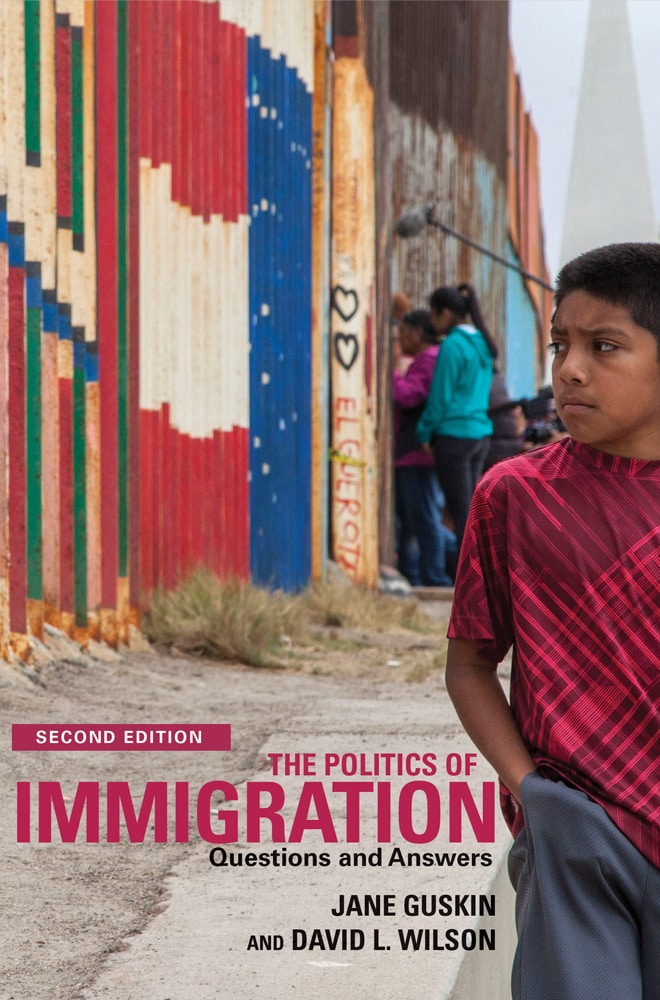Venezuelan migrants “destroying New York”? (David Wilson featured on NYU Press blog)
By David L. Wilson, author,
The Politics of Immigration: Questions and Answers
(Second Edition)
There’s been a lot of talk in the past few years about a so-called “border crisis”—that is, a recent increase in migrants entering the United States to apply for asylum. Rightwing politicians and media have been responsible for the most strident claims, but more and more centrists seem to be getting on the crisis bandwagon. In September, New York’s Democratic mayor, Eric Adams, warned a town hall that the past year’s increase in asylum seekers, many of them Venezuelan, could “destroy” his city.
But crisis mongers like the mayor have been avoiding two important questions: Is the number of unauthorized migrants entering the country significantly greater now than it was in the past, and what would be a sensible response to the increase, if it existed?
The reality is that current levels of unauthorized immigration are in line with those over the past half-century. Fiscal 2021 “brought the highest number of illegal crossings recorded since at least 1960,” the New York Times reported that year, but the paper’s claim was based on the number of Border Patrol apprehensions at the border, not on the actual number of people crossing.
It’s true that Border Patrol agents apprehended migrants some 1.7 million times in fiscal 2021, more than the 1.6 million apprehensions in 2000, the previous high point. But there’s a crucial difference: border agents can now apprehend a much greater percentage of border crossers than they could in 2000. The number of agents has doubled since 2000, current border crossers are likely to be asylum seekers who turn themselves in to the agents, and the 654 miles of border fence constructed under the G.W. Bush and Obama administrations make it harder to cross without being detected.
Crunching the Numbers
So how many migrants actually succeed in crossing the border without authorization? The number now seems to be significantly lower than in 2000, a year when the Times editorialized about “a quieter immigration debate.” Demographers Robert Warren and John Robert Warren estimate that the undocumented population grew by a little more than one million in 2000. In contrast, the increase during the two-year period from mid-2019 to mid-2021 was 200,000, according to Migration Policy Institute estimates, and the undocumented population still remained smaller than it had been in 2007.
In other words, during a period dominated by “border crisis” hysteria, the undocumented population was growing by just one-tenth the annual rate the United States experienced two decades earlier.
There is one major difference from 2000, however: Border crossers now are much visible to the U.S. public. Before, most unauthorized crossings were by single males looking for work and seeking to avoid contact with the authorities; the people entering now are often whole families that register with the government in hopes of gaining asylum.
Enter the Venezuelans
Venezuelans are among the most visible of today’s asylum seekers. In the past, many asylum seekers came from Central America, but they attracted less attention. There was already a large Central American population here, so many of those asylum seekers got help from family or friends once they arrived. In contrast, the United States had a relatively small Venezuelan population until recently, with the result that Venezuelan asylum seekers are often on their own. The result is situations like the one in New York City, where Venezuelan migrants are filling up homeless shelters and providing fodder for conservative rants about border security. But with Venezuelan asylum seekers, the rightwing rhetoric runs into an obvious contradiction.
Most of the U.S. political class regularly describes Venezuela’s leftist government as viciously repressive. Logically, conservatives should be welcoming Venezuelans as escapees from a supposed socialist dystopia. But conservatives are doing nothing of the sort. Florida’s Republican governor, Ron DeSantis, for example, denounces Venezuelan president Nicolas Maduro as a “murderous tyrant,” but he treats the arrival of asylum seekers as an “invasion.” Last year, he even used fifty Venezuelan asylum seekers as props in a cynical publicity stunt, flying the confused migrants to Martha’s Vineyard in order to “own the libs.”
What About the Embargo?
The conservative rationale for opposing Venezuelan asylum seekers is a claim they are really just “economic migrants,” as the immigration-restrictionist Center for Immigration Studies puts it.
In fact, many or most asylum seekers have a mix of reasons for coming here. It’s possible to want to escape both poverty and political repression. Venezuela definitely has its share of economic problems, some because of government mismanagement, others because the country is overly dependent on income from oil exports and thus exceptionally vulnerable to market fluctuations. But one major problem is a series of economic sanctions by the U.S. government.
So why not just end the U.S. embargo on Venezuela? Rep. Alexandria Ocasio-Cortez has suggested this, and as of October 19 the Biden administration has temporarily lifted important sanctions. If Venezuelans are coming here just to escape economic problems at home, reducing the embargo should bring about a major decline in Venezuelan asylum seekers.
Republican politicians immediately denounced this easing of economic sanctions on Venezuela, however, raising questions about the sincerity of their fulminations against asylum seekers. Is it possible that they’re really just trying to distract us from actual crises—growing economic inequality, for instance, a failing healthcare system, rising gun violence, the devastating effects of climate change?
See the blog post at NYU Press

